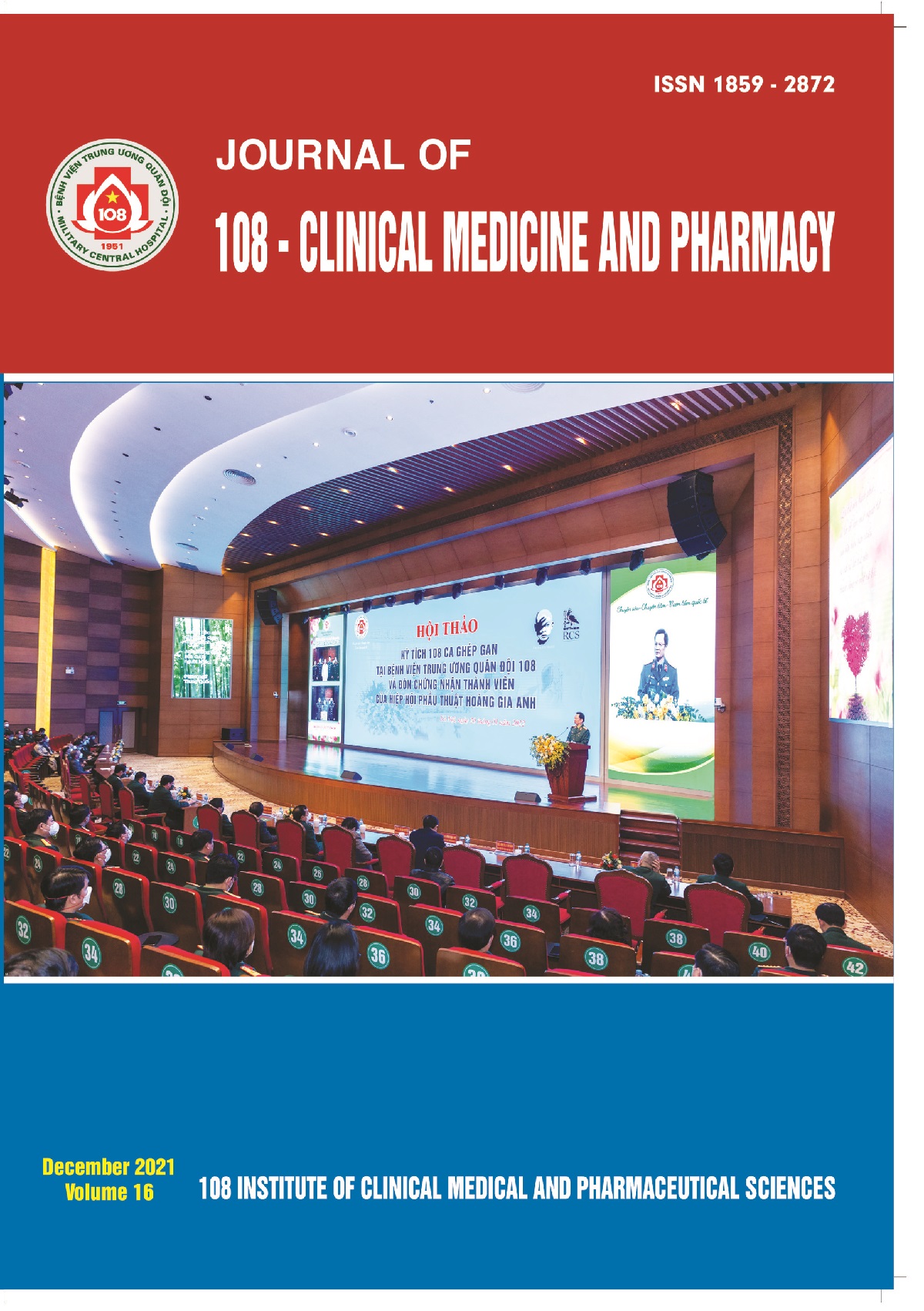Initial results in restoration of some anatomical dimensions in standard cementless total hip replacement
Main Article Content
Abstract
Objective: To give initial results in the restoration of some important anatomical parameters (femoral neck angle, distance from the center of the crest to the femoral axis (offset), and limb deviation) in the standard cementless total hip replacement in the treatment of aseptic necrosis of the femoral head. Subject and method: In studies in the period from 2/2021 to 6/2021, the authors used the Medi-CAD software integrated on the computer to determine the femoral neck angle, the distance from the center of the crest to the femoral axis (offset), the limb deviation of 24 hip joints was surveyed on 20 patients at the time preoperative and postoperative with standard Zimmer hip joints. The method used in this study is a cross-sectional, prospective study. Result: The results show that the mean postoperative femoral neck angle was 131.1 ± 3.2º while the preoperative size was 129.8 ± 3.4º. The average postoperative offset size was 35.6 ± 4.8mm and higher than before surgery was 32.5 ± 5.4mm. Postoperative limb deviation was 3.2 ± 2.7mm and lower than preoperative was 12.3 ± 4.5mm, the difference was insignificant statistically. Conclusion: Research results show that the closer the femoral neck angle and the offset is to the original value, the better the limb balance.
Article Details
References
2. Edwards BN et al (1987) Contributory factors and etiology of sciatic nerve palsy in total hip arthroplasty. Clin. Orthop. Relat. Res 218: 136-141.
3. Jerosch J et al (2012) Reproduction of the anatomy (offset, CCD, leg length) with a modern short stem hip design a radiological study. Z Orthop Unfall 150(1): 20-26.
4. Lecerf G et al (2009) Femoral offset: Anatomical concept, definition, assessment, implications for preoperative templating and hip arthroplasty.
OrthopaediKT & Traumatology: Surgery & Research 95: 210-219.
5. Maruyama M, Feinberg JR, Capello WN, D’Antonio JA (2001) The Frank Stinchfield Award: Morphologic Features of the acetabulum and femur: Anteversion angle and implant positioning. Clin Orthop Relat Res 393: 52-65.
6. Müller M, Abdel MP Wassilew GI (2015) Do post-operative changes of neck shaft angle and femoral component anteversion have an effect on clinical outcome following uncemented total hip arthroplasty? Bone Joint J 97: 1615-1622.
7. Pouget G (2018) Offset and neck-shaft angle in total hip arthroplasty: Consequences. J Bone Joint Surg Br 90-B(SUPP_II): 243.
8. Schidlo C, Becker C, Jansson V, Refior J (1999) Change in the CCD angle and the fem- oral anteversion angle by hip prosthesis implantation. Z Orthop Ihre Grenzgeb 137: 259-264.
9. Schmidutz F, Beirer M, Weber P, Mazoochian F, Fottner A, Jansson V (2012) Biomechanical reconstruction of the hip: Comparison between modular short-stem hip arthroplasty and conventional total hip arthroplasty. Int Orthop 36: 1341-1347.
10. Steinberg B, Harris WH (1992) The offset problem in total hip arthroplasty. Cont Orthop 24: 556-562.
 ISSN: 1859 - 2872
ISSN: 1859 - 2872
